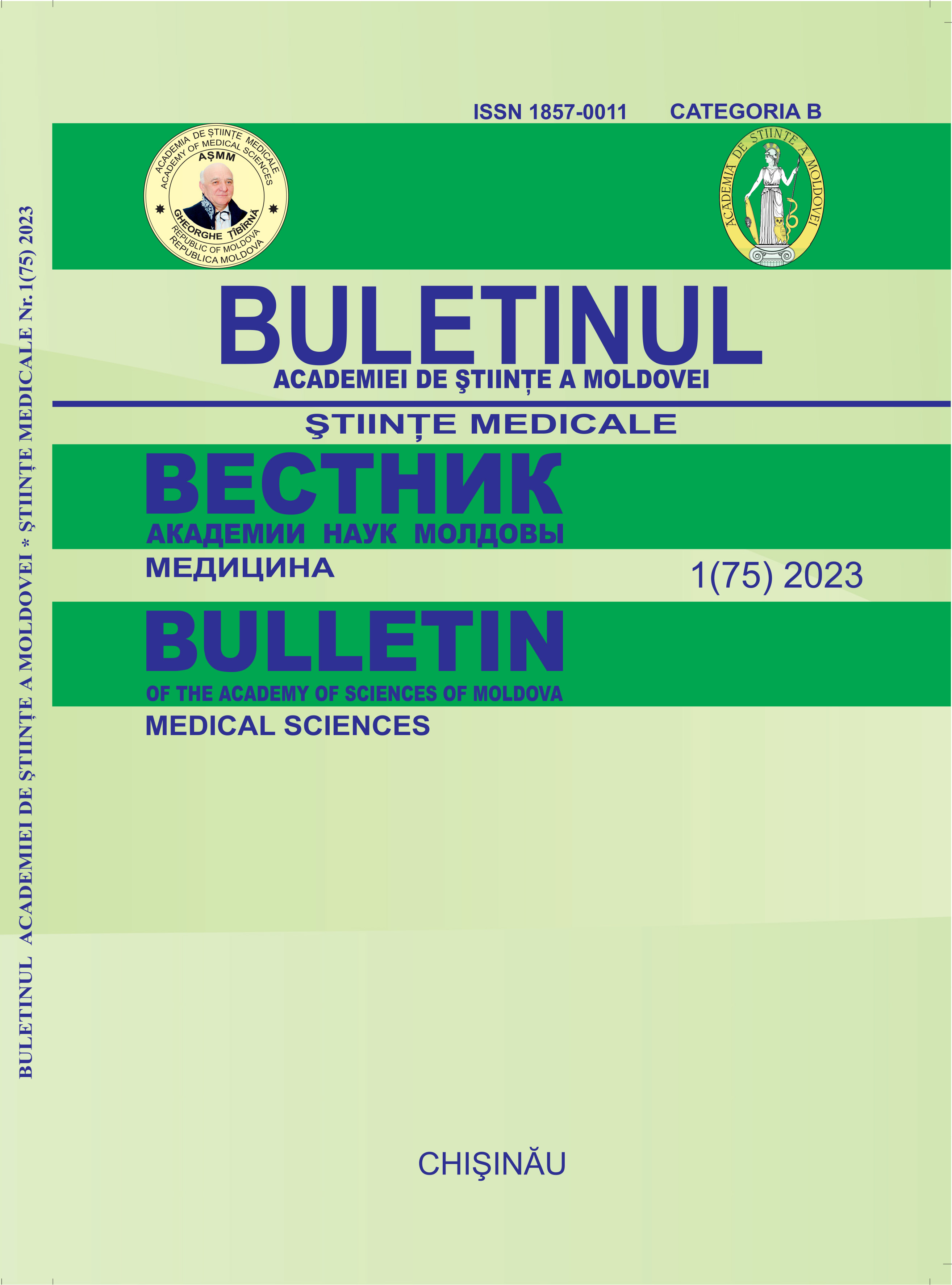Легочная эмболия, ассоциированная с острым инфарктом миокарда с подъемом сегмента ST
DOI:
https://doi.org/10.52692/1857-0011.2023.1-75.24Keywords:
pulmonary embolism, myocardial infarctionAbstract
Pulmonary embolism (PE) is a potentially fatal condition that presents with shortness of breath and chest pain. Al- though an electrocardiogram (ECG) may show changes associated with PE, ST elevation mimicking ST elevation myo- cardial infarction is not common in patients with acute PE. This presentation documents the case of a 67-year-old man who presented to the emergency department with dyspnea and chest pain. ECG data indicated anterior septal myocardial infarction and acute ischemia of the lower parts of the left ventricle. Cardiac catheterization did not reveal atherosclerotic lesions of the coronary arteries, but revealed an anomaly in the filling of the right coronary artery with embolic masses. Further examination of the patient revealed massive bilateral pulmonary embolism. In this presentation, we emphasize the need to evaluate patients with PE who present with chest pain, dyspnea, or both, even when ECG findings suggest a cardiac etiology. We also present a brief discussion of possible mechanisms for ST elevation in pulmonary embolism.
References
Konstantinides SV, Meyer G, Becattini C, et al.ESC Scientific Document Group 2019 ESC Guidelines for the diagnosis and management of acute pulmonary embolism developed in collaboration with the European Respiratory Society (ERS): The Task Force for the diagnosis and management of acute pulmonary embolism of the European Society of Cardiology (ESC) Eur Heart J. 2020;4:543–603
Livaditis IG, Paraschos M and Dimopoulos K. Massive pulmonary embolism with ST elevation in leads V1V3 and successful thrombolysis with tenecteplase. Heart 2004; 90: e41.
Yeh KH and Chang HC. Massive pulmonary embolism with anterolateral ST-segment elevation: electrocardiogram limitations and the role of echocardiogram. Am J Emerg Med 2008; 26: 632 e1–3
Omar HR. ST-segment elevation in V1-V4 in acute pulmonary embolism: a case presentation and review of literature. Eur Heart J Acute Cardiovasc Care 2016;5: 579–586.
Stein PD, Beemath A, Matta F, et al. Clinical characteristics of patients with acute pulmonary embolism: Data from PIOPED II. Am J Med. 2007;120:871–79.
Stein PD, Matta F, Musani MH, Diaczok B. Silent pulmonary embolism in patients with deep venous thrombosis: A systematic review. Am J Med. 2010;123:426–31
McConnell MV, Solomon SD, Rayan ME, et al. Regional right ventricular dys-function detected by echocardiography in acute pulmonary embolism. Am J Cardiol. 1996;78:469–73
Sukhija R, Aronow WS, Ahn C, et al. Electrocardiographic abnormalities in patients with right ventricular dilation due to acute pulmonary embolism. Cardiology 2006; 105: 57–60.
Sreeram N, Cheriex EC, Smeets JL, et al. Value of the 12-lead electrocardiogram at hospital admission in the diagnosis of pulmonary embolism. Am J Cardiol 1994;73: 298–303.
Zhan ZQ, Wang CQ and Baranchuk A. Acute pulmonary embolism with ST-segment elevation in the inferior leads. Int J Cardiol 2014; 177: 718–71
Lin JF, Li YC, Yang PL. A case of massive pulmonary embolism with ST elevation in leads V1–4. Circ J. 2009;73:1157–59.
Falterman TJ, Martinez JA, Daberkow D, Weiss LD. Pulmonary embolism with ST segment elevation in leads V1 to V4: Case report and review of the literature regarding electrocardiographic changes in acute pulmonary embolism. J. Emerg Med. 2001;21:255–61.
Goslar T, Podbregar M. Acute ECG ST-segment elevation mimicking myocar-dial infarction in a patient with pulmonary embolism. Cardiovasc Ultrasound. 2010;8:50.
Wilson GT, Schaller FA. Pulmonary embolism mimicking anteroseptal acute myocardial infarction. J Am Osteopath Assoc. 2008;108:344–49
Pedro A,Villablanca, Peter P Vlismas et al. Case report and systematic review of pulmonary embolism mimicking ST-elevation myocardial infarction. Vascular 2019; Vol. 27(1) 90–97
Piazza G and Goldhaber SZ. Management of submassive pulmonary embolism. Circulation 2010; 122: 1124–1129
Masotti L, Righini M, Vuilleumier N, et al. Prognostic stratification of acute pulmonary embolism: focus on clinical aspects, imaging, and biomarkers. Vasc Health Risk Manag 2009; 5: 567–575
Grifoni S, Olivotto I, Cecchini P, et al. Short-term clinical outcome of patients with acute pulmonary embolism, normal blood pressure, and echocardiographic right ventricular dysfunction. Circulation 2000; 101: 2817–2822
Kearon C, Akl EA, Ornelas J, et al. Antithrombotic therapy for VTE disease: CHEST guideline and Expert Panel Report. Chest 2016; 149: 315–352.
Ayesha Siddiqa,Asim Haider,Abhishrut Jog. et al. Pulmonary Embolism Presenting as ST-Elevation Myocardial Infarction: A Diagnostic Trap. Am J Case Rep. 2020; 21: e927923-1–e927923-6
Ribeiro A, Lindmarker P, Juhlin-Dannfelt A, et al.Echocardiography Doppler in pulmonary embolism: right ventricular dysfunction as a predictor of mortality rate. Am Heart J 1997; 134: 479–487.
Hendriksen JM, Koster-van Ree M, Morgenstern MJ,et al. Clinical characteristics associated with diagnostic delay of pulmonary embolism in primary care: a retrospective observational study. BMJ Open 2017;7: e012789.
Aydogdu M, Dogan NO, Sinanoglu NT, et al. Delay in diagnosis of pulmonary thromboembolism in emergency department: is it still a problem? Clin Appl Thromb Hemost 2013; 19: 402–409.
Downloads
Published
License
Copyright (c) 2023 Bulletin of the Academy of Sciences of Moldova. Medical Sciences

This work is licensed under a Creative Commons Attribution 4.0 International License.



